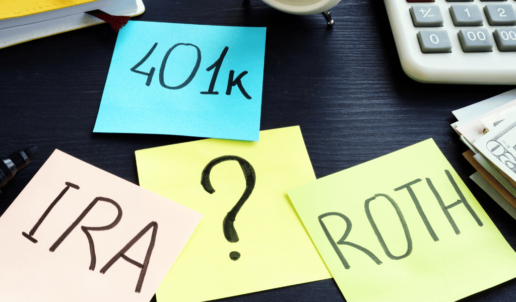Viewpoint: How to Minimize the Risk of Retirement Plan Litigation
Many employers have paid millions to settle lawsuits brought to them based on their excessive fees in their retirement plans. It's the employer's responsibility to ensure that retirement plans are created for the most benefit for those who partake in it. Read this blog post to learn more.
What do Estee Lauder and Costco have in common? Both are defending themselves against lawsuits alleging mismanagement of 401(k) accounts, as retirement plan litigation under the Employee Retirement Income Security Act (ERISA) proliferates.
LinkedIn was added to the list in August, when a class-action lawsuit was filed alleging the firm mismanaged its 401(k) plan. And, on Sept. 18, a federal judge rejected a petition by AutoZone Inc. to dismiss allegations of ERISA violations filed by 401(k) plan participants.
In recent years, employers as different as Princeton University and WalMart have paid millions of dollars to settle lawsuits brought by employees alleging excessive fees in their retirement plans.
At the heart of many of these cases are allegations that employers' retirement plan oversight committees tolerated high fees and poor investment performance. Retirement plan committee members are fiduciaries who, under ERISA, are responsible for ensuring that the plan operates in the best interest of its participants.
Attracting Lawsuits
Companies settling ERISA lawsuits are typically accused of failing to pay adequate attention to the retirement plan, such as by failing to remove or replace poor or overly expensive investment choices and allowing vendors to charge above-market fees. The old adage that an ounce of prevention is worth a pound of cure is relevant here.
Law firms are combing through ERISA plan annual filings to identify worthwhile 401(k) targets, looking for expensive or poorly performing investments and high recordkeeping costs. ERISA complaints now include tables and charts comparing a targeted plan's investment performance and expenses with average or best-available practices, to persuade courts that a trial is in order.
Law firms comb through ERISA plan filings to identify worthwhile targets.
Adopting Best Practices
Plan sponsors can't completely eliminate the risk that they will be sued by current or former plan participants, but companies can minimize the risk by adopting best practices—such as those listed below—for making plan investment and management decisions.
FORM AN ACTIVE RETIREMENT PLAN OVERSIGHT COMMITTEE.
The committee should include interested employees, including representatives of HR, finance, legal and rank-and-file employees. A well-functioning committee has a range of talents and perspectives to help it make effective decisions.
The committee should operate under a written charter, setting out the responsibilities of the committee and its procedural rules for appointing members, holding meetings, voting, and hiring advisors and experts as needed, for example. The charter need not be overly rigid or specific but should be drafted to reflect how the committee will operate.
PROVIDE PERIODIC FIDUCIARY TRAINING FOR COMMITTEE MEMBERS.
ERISA is complicated, and committee decisions have direct impacts on employees' retirement income. Committee members must act solely in the interest of plan participants and make decisions as a "prudent expert." Ask vendors to have their top technical experts conduct training, and ensure that the training is tailored to plans of your size.
WRITE AND ADOPT AN INVESTMENT POLICY STATEMENT.
While having an investment policy statement (IPS) is not generally a requirement for 401(k) plans, it is an important document as it may help show that the committee acted prudently and in the plan's best interests in evaluating investments. The IPS should include specific language describing the process by which investments are selected, monitored and replaced when necessary.
It is not advisable to list the plan's current investments within the IPS, as this list may change over time and the IPS may not always be consistent with the website your participants visit to manage their accounts.
MINIMIZE INVESTMENT FUND EXPENSES.
Sponsors of 401(k) plans have spent millions of dollars settling allegations that they had overly expensive funds, in many cases retail-share classes rather than institutionally priced investments.
The expense ratios that 401(k) plan participants incur for investing in mutual funds have declined substantially since 2000, reports the Investment Company Institute, a trade association for financial services firms. In 2000, 401(k) plan participants incurred an average expense ratio of 77 basis points (0.77 percent) for investing in equity mutual funds. By 2019, that figure had fallen to 39 basis points (0.39 percent), which is a 49 percent decline.
For plan sponsors of all sizes, it is imperative to document efforts to maintain the lowest possible investment expenses.
COMPARE INVESTMENT PERFORMANCE.
How do your plan's funds compare to similar offerings? There is no shortage of high-performing, low-expense funds to choose from in each investment category. While the retirement committee can't forecast future investment performance, it can determine prudent funds based on their track record.
If investment evaluation isn't your forte, get expert help from an investment adviser that accepts fiduciary responsibility for investment recommendations.
DROP UNDERPERFORMING FUNDS.
If the menu needs to be revamped, just do it. The small inconvenience of explaining to employees why changes are being made is better than responding to document requests arising from litigation for failing to let go of underperforming funds.
MONITOR REVENUE-SHARING.
Many mutual funds share a small portion of their expense ratio fees with plan administrative firms, which may reduce the costs that plan sponsors pay administrative firms for services such as recordkeeping of participants' investments, providing statements and distributing literature. Fund share classes with no revenue-sharing, however, have lower expense ratios and slightly better investment performance.
If revenue-sharing is in place for any fund being offered through the plan, audit it periodically—at least annually—and ensure that it is reducing plan expenses that might otherwise be paid by participants.
PAY VENDORS WITH FLAT-DOLLAR FEES.
All plans should grill their recordkeepers and other vendors on whether they charge the very lowest administrative fees available. When plan sponsors don't pay administrative fees themselves, a best practice is to charge participants a flat recordkeeping fee (perhaps subsidizing small balances) rather than using revenue-sharing funds to pay the recordkeeper a fee based on the percentage of assets in plan accounts.
If plan sponsors engage an investment adviser, it's also preferable to pay them a flat-dollar fee rather than a fee that fluctuates based on plan assets. Advisers should not be thinking about how recommended changes in a fund lineup will affect their pay.
In all circumstances, evaluating fees on a flat-dollar amount or dollars per participant will provide useful comparisons to fees based on a percentage of assets under management in the plan.
MAINTAIN CONSTANT VIGILANCE ON ADMINISTRATIVE FEES.
Recordkeepers and other vendors negotiate best when they perceive that they may lose you as a customer. As a fiduciary, you and your team need to play hardball at times. Don't worry about hurting the feelings of the vendor's personnel—you're the fiduciary with potential liability, they're not. Benchmark your administrative fees and consider issuing a request for proposal (RFP) for administrative services every few years.
Even though plans may not have changed much, vendors have, and they should be able to lower costs or provide additional services.
DOCUMENT YOUR DECISIONS, BUT BE SMART ABOUT IT.
Maintaining good records is a must but understand that any and all plan-related documents can wind up in the hands of class-action attorneys. Meeting minutes and e-mails should be carefully written and demonstrate a prudent process, to avoid casting the plan or committee in a bad light.
GET IT IN WRITING.
Vendor contracts should be negotiated, not rubber-stamped. Keep track of promises made in RFP responses and finalist presentations. A vendor's oral promises should be documented within their service agreement. Insist on performance guarantees so your plan will be compensated for any service lapses.
DON'T ACCEPT FORCED ARBITRATION WITH ANY VENDORS.
Fiduciaries should not sign away their option to use federal courts to resolve conflicts with vendors. Plan sponsors can always choose to arbitrate a dispute, as vendors prefer this. Just don't sign any contracts agreeing to compulsory arbitration of any and all disputes.
PROTECT AGAINST IDENTITY THEFT.
Ensure that hackers don't steal your employees' account balances. Ask recordkeepers about their security practices, experiences in defeating hackers, and resources committed to maintaining strong cybersecurity.
Obtain a written commitment in the service agreement that the vendor will reimburse participants who followed account security guidelines and, through no fault of their own, had their accounts depleted.
Summing Up
There are several things a company can do to protect against 401(k) litigation. Have the retirement plan run by a committee of dedicated, knowledgeable employees. Hire independent expert advisers to help with investments, vendor oversight and training. Make sure that all fees are competitive, using benchmarking and RFPs as needed. Use an objective fund scoring methodology and replace underperforming investments. Document decisions and pay attention to process.
SOURCE: Scott, P. (22 September 2020) "Viewpoint: How to Minimize the Risk of Retirement Plan Litigation" (Web Blog Post). Retrieved from https://www.shrm.org/resourcesandtools/hr-topics/benefits/pages/minimize-risk-of-retirement-plan-litigation.aspx
Views: Mitigating COVID-19’s catastrophic impact on retirement readiness
As the coronavirus has placed many financial worries onto families, it has also placed a sense of worries for those that are planning for their retirement. Read this blog post to learn more.
It’s bad enough that more than 50 million Americans have filed claims for unemployment benefits since the start of the COVID-19 pandemic and lockdown. But in addition to the disruption, financial hardship, and uncertainty that unemployed Americans (and their families) are experiencing right now, this crisis also threatens their financial security during retirement.
As I have written many times before in this column, defined contribution plan participants will seriously diminish their retirement savings if they prematurely cash out all or part of their 401(k) savings account balances. According to our research, a hypothetical 30-year-old who cashes out a 401(k) account with $5,000 today would forfeit up to $52,000 in earnings they would have accrued by age 65, if we assume the account would have grown by 7% per year. In addition, the Employee Benefit Research Institute (EBRI) estimates that the average American worker will change employers 9.9 times over a 45-year period. With at least 33% and as many as 47% of plan participants cashing out their retirement savings following a job change, according to the Savings Preservation Working Group, that means workers switching jobs could cash out as many as four times over a working career, devastating their ability to fund a secure retirement.
Even before COVID-19 and “social distancing” became part of the national lexicon, cash-outs posed a huge problemto Americans’ retirement prospects. At the beginning of this year, EBRI estimated that the U.S. retirement system loses $92 billion in savings annually due to 401(k) cash-outs by plan participants after they change jobs.
Building a long-term COVID strategy
These alarming trends were uncovered long prior to the pandemic and lockdown. Since the start of the COVID-19 outbreak, theCoronavirus Aid, Relief, and Economic Security (CARES) Act stimulus has temporarily eased limits, penalties, and taxes on early withdrawals from retirement savings accounts made by December 31, 2020. While the CARES Act measures are clearly well-intentioned, participants who take advantage of these provisions risk creating a long-term problem while resolving short-term liquidity needs.
Heightening the temptation to make 401(k) withdrawals is the recent expiration of another CARES Act provision—the extra $600 weekly payments to Americans who lost their jobs due to the COVID-19 pandemic. These additional federal unemployment benefits expired at the end of July, and as of this writing no deal to extend them has been reached in Congress. For Americans who had been relying on this benefit, or continue to experience financial hardship and stress about paying expenses, it is understandable that 401(k) savings could look like an attractive source of emergency liquidity.
However, given the long-term damage that cash-outs inflict on retirement outcomes, plan sponsors and recordkeepers should take this opportunity, as fiduciaries, to educate their current and terminated participants about the importance of tapping into their 401(k) savings only as an absolute last resort.
Institutionalizing portability can help
The lack of a seamless process for transporting 401(k) assets from job to job causes many participants to view cashing out as the most convenient option. And without an easy way to locate the mailing addresses of lost and missing terminated participants, sponsors and recordkeepers are unable to ensure holders of small accounts receive notifications about the status of their plan benefits.
Fortunately for participants, sponsors, and recordkeepers, technology solutions enabling the institutionalization of plan-to-plan asset portability have been live for three years. These innovations include auto portability, the routine, standardized, and automated movement of a retirement plan participant’s 401(k) savings account from their former employer’s plan to an active account in their current employer’s plan.
Auto portability is powered by “locate” technology and a “match” algorithm, which work together to find lost and missing participants, and initiate the process of moving assets into active accounts in their current-employer plans.
By adopting auto portability, sponsors and recordkeepers can not only discourage participants from cashing out, but also eliminate the need for automatic cash-outs. And these advantages come at a time when the hard-earned savings of tens of millions of Americans are at risk of being removed from the U.S. retirement system.
Before the COVID-19 pandemic, EBRI estimated that if all plan participants had access to auto portability, up to $1.5 trillion in savings, measured in today’s dollars, would be preserved in our country’s retirement system over a 40-year period. Now more than ever, the institutionalization of portability by sponsors and recordkeepers is essential for helping Americans achieve financial security in retirement.
SOURCE: Williams, S. (31 August 2020) "Mitigating COVID-19’s catastrophic impact on retirement readiness" (Web Blog Post). Retrieved from https://www.employeebenefitadviser.com/opinion/how-to-mitigate-covid-19s-potentially-catastrophic-impact-on-retirement-readiness
The little-discussed downsides of retirement
As the discussions of retirement are inevitable, there are questions that do not always get addressed. Continue reading this blog post to learn more about questions regarding retirement that are not always talked about.
The downsides of retirement that nobody talks about
Clients should identify the possible downsides in retirement and plan on how to avoid them, according to this article in Yahoo Finance. One of these snags is taxation on their retirement income, which can hurt their cash flow. To minimize income taxes in retirement, clients should consider creating sources of tax-free income, such as Roth 401(k), Roth IRA and permanent life insurance coverage.
Can clients have a 401(k) and an IRA?
Employees who are contributing to 401(k) plans can also save in traditional IRAs, but their IRA contributions will not be tax deductible if their income exceeds a certain threshold, according to this article in NerdWallet. Participants in 401(k)s can also contribute to Roth IRAs if they earn below the income limits set for Roth accounts. To make the most of these savings vehicles, clients should make enough 401(k) contributions to qualify for their employer's full match and save the rest of their retirement money in traditional IRAs to reduce their taxable income. Those in a lower tax bracket may opt to direct the funds to Roth IRAs to boost their after-tax income in retirement.
A big question in retirement planning: How long will I live?
Although people cannot predict their own lifespan retirement, there are online tools and services that clients can use to have a good estimate of their longevity and plan for retirement, according to this article in The Wall Street Journal. “No one can predict definitively how long someone is going to live,” says an expert. “But we can say, ‘For someone your age and gender, with your level of income and education, your body-mass index and sleep and exercise patterns, this is what science tells us you are likely to experience.’”
Retiring this year? Here's what clients need to do first
There are a few things seniors should do before they retire later this year, according to this article in Forbes. Pre-retirees should maximize their contributions to 401(k)s and other tax-favored retirement accounts, review Social Security numbers and Medicare changes and create estate plans. They should consider converting some of their traditional assets into Roths to boost their after-tax income in retirement.
SOURCE: Schiavo, A. (28 February 2020) "The little-discussed downsides of retirement" (Web Blog Post). Retrieved from https://www.employeebenefitadviser.com/news/the-little-discussed-downsides-of-retirement
Traditional IRA, Roth IRA, 401(k), 403(b): What's the Difference?
The earlier you begin planning for retirement, the better off you will be. However, the problem is that most people don’t know how to get started or which plan is the best vehicle to get you there.
A good retirement plan usually involves more than one type of investment account for your retirement funds. This may include both an IRA and a 401(k), allowing you to maximize your planning efforts.
If you haven’t begun saving for retirement yet, don’t be discouraged. Whether you begin through an employer sponsored plan like a 401(k) or 403(b) or you begin a Traditional or Roth IRA that will allow you to grow earnings from investments through tax deferral, it is never too late or too early to begin planning.

This article discusses the four main retirement savings accounts, the differences between them and how Saxon can help you grow your nest egg.
“A major trend we see is that if people don’t have an advisor to meet with, they tend to invest too conservatively, because they are afraid of making a mistake,” said Kevin Hagerty, a Financial Advisor at Saxon Financial.
“Then the problem is they don’t revisit it, and if you’re not taking on enough risk you’re not giving yourself enough opportunity for growth. You run the risk that your nest egg might not grow to what it should be.”
“Saxon is here to help people make the best decision on how to invest based upon their risk tolerance. We have methods to determine an individual’s risk factors, whether it be conservative, moderate or aggressive, and we make sure to revisit these things on an ongoing basis.”
Traditional IRA vs. Roth IRA
Who offers the plans?
Both Traditional and Roth IRAs are offered through credit unions, banks, brokerage and mutual fund companies. These plans offer endless options to invest, including individual stock, mutual funds, etc.
Eligibility
Anyone with Earned, W-2 Income from an employer can contribute to Traditional or Roth IRAs, as long as you do not exceed the maximum contribution limits. However, only qualified distributions from a Roth IRA are tax-free.
In order to be able to contribute to a Roth IRA, you must have taxable income and your modified adjusted gross income is either:
- less than $194,000 if you are married filing jointly
- less than $122,000 if you are single or head of household
- less than $10,000 if you’re married filing separately and you lived with your spouse at any time during the previous year.
Tax Treatment
With a Traditional IRA, typically contributions are fully tax-deductible and grow tax deferred. So when you take the money out at retirement, it is taxable. With a Roth IRA, the contributions are not tax deductible but grow tax deferred. So when the money is taken out at retirement, it will be tax free.
“The trouble is nobody knows where tax brackets are going to be down the road in retirement. Nobody can predict with any kind of certainty because they change,” explained Kevin. “That’s why I’m a big fan of a Roth.”
A Roth IRA can be a win-win situation from a tax standpoint. Whether the tax brackets are high or low when you retire, it doesn’t matter. Your money will be tax free when you withdraw it. Another advantage is, at 70 ½, you are not required to start taking money out. “We’ve seen Roth IRAs used as an Estate planning tool, and they’ll be able to take that money out tax free. It’s an immense gift,” Kevin said.
Maximum Contribution Limits
Contribution limits between the Traditional and Roth IRAs are the same; the maximum contribution is $6,000, or $7,000 for participants 50 and older.However, if your earned income is less than $6,000 in a year, say $4,000, that is all you would be eligible to contribute.
“People always tell me, ‘Wow, $6,000, I wish I could do that. I can only do $2,000.’ Great, do $2,000,” said Kevin. “I always tell people to do what they can and then keep revisiting it and contributing more when you can. If you increase a little each year, you will be contributing $6,000 eventually and not even notice.”
Withdrawal Rules
With a Traditional IRA, withdrawals can begin at age 59 ½ without a 10% early withdrawal penalty but still with Federal and State taxes. The IRS will mandate that you begin withdrawing at age 70 ½.
Even though most withdrawals are scheduled for after the age of 59 ½, a Roth IRA has no required minimum distribution age and will allow you to withdraw contributions at any time. For example, if you have contributed $15,000 to a Roth IRA, but the actual value of it is $20,000 due to growth, then the contributed $15,000 could be withdrawn with no penalty, any time – even before age 59 ½.
Employer Related Plans – 401(k) & 403(b)
A 401(k) and a 403(b) are theoretically the same thing; they share a lot of similar characteristics with a Traditional IRA as well.
Typically, with these plans, employers match employee contributions, such as .50 on the dollar up to 6%. The key to this is to make sure you are contributing anything you can to receive a full employer match.
Who offers the plans?
One of the key differences with these two plans lies in whether the employer is a for-profit or non-profit entity.

These plans will have a number of options of where to invest, often a collection of investment options selected by the employer.
Eligibility
401(k)’s and 403(b)’s are open to all employees of the company for as long as they are employed there. If an employee leaves the company they are no longer eligible for these plans since 401(k) or 403(b) contributions can only be made through pay roll deductions. However, you can roll it over into an IRA and then continue to contribute on your own.
Only if you take possession of these funds would you pay taxes on them. If you have a check sent to you and deposit it into your checking account – you don’t want to do that.
Then they take out federal and state taxes and tack on a 10% early withdrawal penalty if you are not age 59 ½. It can be beneficial to roll a 401(k) or 403(b) left behind at a previous employer over to an IRA so it is in your control, and you have increased investment options.
Tax Treatment
Contributions are made into your account on a pretax basis through payroll deduction.
Maximum Contribution Limits
The maximum contribution is $19,500, or $26,000 for participants 50 and older.
Depending on the employer, some 401(k) and 403(b) plans provide loan privileges, providing the employee the ability to borrow money from the employer without being penalized.
Withdrawal Rules
In most instances, comparable to a Traditional IRA, withdrawals can begin at age 59 ½ without a 10% early withdrawal penalty. The IRS will mandate that you begin withdrawing at age 70 ½. Contributions and earnings from these accounts will be taxable as ordinary income. There are certain circumstances when one can have penalty free withdrawals at age 55, check with your financial or tax advisor.
In Conclusion…
“It is important to make sure you are contributing to any employer sponsored plan available to you, so you are receiving the full employer match. If you have extra money in your budget and are looking to save additional money towards retirement, that’s where I would look at beginning a Roth IRA. Then you can say you are deriving the benefits of both plans – contributing some money on a pretax basis, lowering federal and state taxes right now, getting the full employer contribution match and then saving some money additionally in a Roth that can provide tax free funds/distributions down the road,” finished Kevin.
To learn more, contact Kevin Hagerty today at (513) 333-3886 or via email at khagerty@gosaxon.com.
Bringing the knowledge of our in-house advisors right to you...
The Mega Backdoor Roth IRA and Other Ways to Maximize a 401(k)
Did you know: Numerous 401(k) retirement plans allow after-tax contributions. This creates financial planning opportunities that are frequently overlooked. Read this blog post for more information on maximizing your 401(k) plan.
The most popular workplace-sponsored retirement plan is far and away the 401(k) — a plan that can be both simple and complex at the same time. For some of your clients, it functions as a tax-deductible way to save for retirement. Others might see its intricacies as a way to maximize lifetime wealth, boost investments and minimize taxes. One such niche area of 401(k) planning is after-tax contributions, an often misunderstood and underutilized area of planning.
Before we jump into after-tax contributions, we need to cover the limits and the multiple ways your clients can invest money into 401(k) plans.
Employee Salary Deferrals and Roth
The most traditional way you can contribute money to a 401(k) is by tax-deductible salary deferrals. In 2019, employees can defer up to $19,000 a year. If they’re age 50 or older, they can contribute an additional $6,000 into the plan. In 2020, these numbers for “catch-up contributions” rise to $19,500 and $6,500 respectively.
Someone age 50 or over can put up to $25,000 into a 401(k) in 2019 and $26,000 in 2020 through tax-deductible salary deferrals. Additionally, the salary deferral limits could instead be used as a Roth contribution, but with the same limits. The biggest difference is that Roth contributions are after-tax. And as long as certain requirements are met, the distributions, including investment gains, come out income tax-free, whereas tax-deferred money is taxable upon distribution.
Employer Contributions
Employers often make contributions to a 401(k), with many matching contributions. For instance, if an employee contributes 6% of their salary (up to an annual indexed limit on salary of $280,000 in 2019 and $285,000 in 2020), the company might match 50%, 75%, or 100% of the amount. For example, if an employee earns $100,000 a year and puts in $6,000 and their employer matches 100%, they will also put in $6,000, and the employee will end up with $12,000 in their 401(k). Employers can also make non-elective and profit-sharing contributions.
Annual 401(k) Contribution Cap
Regardless of how money goes into the plan, any individual account has an annual cap that includes combined employee and employer contributions. For 2019, this limit is $56,000 (or $62,000 if the $6,000 catch-up contribution is used for those age 50 and over). For 2020, this limit rises to $57,000 ($63,500 if the $6,500 catch-up contribution is used for those age 50 and over).
Inability to Max Out Accounts
If you look at the limits and how people can contribute, you might quickly realize how hard it is to max out a 401(k). If a client takes the maximum salary deferral of $19,000 and an employer matches 100% (which is rare), your client would only contribute $38,000 into the 401(k) out of the maximum of $56,000. Their employer would need to contribute more money in order to max out.
Where After-Tax Contributions Fit In
Not all plans allow employees to make after-tax contributions. If the 401(k) did allow this type of contribution, someone could add more money to the plan in the previous example that otherwise maxed out at $38,000.
After-tax contributions don’t count against the salary deferral limit of $19,000, but they do count toward the annual cap of $56,000. After-tax contributions are what they sound like — it’s money that’s included into the taxable income after taxes are paid, so the money receives all the other benefits of the 401(k) like tax-deferred investment gains and creditor protections.
With after-tax contributions, clients can put their $19,000 salary deferral into the 401(k), get the $19,000 employer match, and then fill in the $18,000 gap to max out the account at $56,000.
Mega-Roth Opportunity
If the plan allows for in-service distributions of after-tax contributions and tracks after-tax contributions and investment gains in separate accounts from salary deferral and Roth money, there’s an opportunity to do annual planning for Roth IRAs.
Clients can convert after-tax contributions from a 401(k) plan into a Roth IRA, without having to pay additional taxes. If a plan allows in-service distributions of after-tax contributions, the money can be rolled over to a Roth IRA each year. However, it’s important to note that any investment gains on the after-tax amount would still be distributed pro rata and considered taxable. Earnings on after-tax money only receive tax-deferred treatment in a 401(k); they aren’t tax free.
Clients can roll over tens of thousands of dollars a year from a 401(k) to a Roth IRA if the plan is properly set up. They can even set up a plan in such a way so the entire $56,000 limit is after-tax money that’s distributed to a Roth IRA each year with minimal tax implications. This strategy is referred to as the Mega Backdoor Roth strategy.
Complexities Upon Distribution of After-Tax Contributions
What happens to after-tax contributions in a 401(k) upon distribution? This is a complex area where you can help clients understand the role of two factors:
- After-tax contributions are distributed pro-rata (proportional) between tax-deferred gain and the after-tax amounts.
- Pre-tax money is usually considered for rollover into a new 401(k) or IRA first, leaving the after-tax attributed second. The IRS provided guidance on allocation of after-tax amounts to rollovers in Notice 2014-54.
Best Practices for Rollovers
Help your clients navigate the world of rollovers with after-tax contributions by following best practices. If a client does a full distribution from a 401(k) at retirement or separation of service, they can roll the entire pre-tax amount to a new 401(k) or IRA and separate out the after-tax contributions to roll over into a Roth IRA. The IRS Notice 2014-54 previously mentioned also provides guidance for this scenario.
You can help your clients understand after-tax contributions by envisioning after-tax money in a 401(k) as the best of three worlds. These contributions enter after taxes and give your client tax-deferred money on investment growth, allow them to save more money in their 401(k) while also giving them the opportunity to roll it over into a Roth IRA at a later date.
After-tax contributions build numerous planning options and tax diversification into retirement plans. Before your clients allocate money toward after-tax contributions, it’s important they understand what their plan allows and how it fits into their overall retirement and financial planning picture.
SOURCE: Hopkins, J. (17 December 2019) "The Mega Backdoor Roth IRA and Other Ways to Maximize a 401(k)" (Web Blog Post). Retrieved from https://www.thinkadvisor.com/2019/12/17/the-mega-backdoor-roth-ira-and-other-ways-to-maximize-a-401k/
IRA spousal contributions can mitigate the high cost of women’s work breaks in retirement plans
According to a November 2018 study, women who took a year off from work in a 15-year period had 39 percent lower average annual earnings than women who worked continuously through that time. Read this blog post for more on how spousal contributions can mitigate the high cost of work breaks in retirement plans.
Women employees face special retirement savings challenges compared with their male counterparts. On average, they earn less and log fewer years of earned income compared to men. That’s because, in part, because women take multiple breaks from work, turn down work or decline promotions because of family care obligations.
The cost of a career break can be high. A November 2018 study by the Washington-based Institute for Women’s Policy Research found that women who took just one year off from work in a 15-year period had 39% lower average annual earnings than women who worked continuously through that time. The study also showed that the number of women taking at least one year off of work during a 15-year period was nearly twice the rate of men — 43% of women compared to 23% of men.
As a result, women are less likely to set aside money in a savings arrangement or to contribute to an employer-sponsored retirement plan.
Spousal advantage
Married women (and men) who take work breaks may stay on track with their retirement savings goals by making IRA (traditional or Roth) contributions based on their working spouse’s income — if they meet these requirements.
- The couple must file a joint federal income tax return
- The working spouse must have enough earned income to make any IRA contributions on behalf of the nonworking spouse, or, if both spouses are contributing, enough income to support both spouses’ contributions
- Assuming enough earned income, each spouse can contribute up to $6,000 (plus $1,000 if turning age 50) for 2019. This limit applies to traditional and Roth IRA contributions combined
- The spouse receiving a traditional IRA contribution must be under age 70 ½ for the entire year
- To be eligible for Roth IRA contributions, the couple must also satisfy income requirements.
Roth IRA income restrictions
The amount that an individual is eligible to contribute to a Roth IRA depends on the amount of the couple’s modified adjusted gross income (MAGI). If the couple’s joint MAGI for a tax year is less than the IRS phase-out range, each spouse can make the maximum Roth IRA contribution allowed for that tax year (assuming enough MAGI to support both spouse’s contributions). If it’s above the phase-out range, neither spouse is eligible to contribute to a Roth IRA. Keep in mind that they could still contribute to a traditional IRA, if under age 70 ½. If the couple’s joint MAGI falls within the phase-out range, their maximum contribution amount is reduced. The MAGI phase-out range is subject to cost-of-living adjustments each year.
Traditional IRA income tax deductions
Note that separate MAGI phase-out ranges apply to traditional IRA contribution deductions — another way for non-working married individuals to potentially benefit when saving for retirement with an IRA. The ability to take a federal income tax deduction for a traditional IRA contribution — if eligible — appeals to many savers. But deduction eligibility depends on whether either spouse is an “active participant” in an employer-sponsored retirement plan. An active participant is generally making or receiving contributions to her retirement plan accounts for the applicable year. Because active participants have access to a workplace retirement plan, the IRS uses its MAGI to determine whether each spouse can take a full deduction, a partial deduction or no deduction at all.
No minimum required
Regardless of which IRA a couple chooses to, the main thing is to contribute — even if it’s a small amount. There is no minimum amount that must be contributed to either type of IRA. Couples can contribute whatever they’re comfortable with, up to the previously described limit. For those concerned about not having enough to set aside in an IRA during a career break, contributing even just $500 or $1,000 for the year will still make a difference.
It certainly beats not saving at all.
SOURCE: Van Zomeren, B. (9 December 2019) "IRA spousal contributions can mitigate the high cost of women’s work breaks in retirement plans" (Web Blog Post). Retrieved from https://www.benefitnews.com/opinion/ira-spousal-contributions-can-mitigate-cost-of-womens-work-breaks-in-retirement
Why using a 401(k) to pay for emergencies is hurting employers and employees
More and more employees are withdrawing $1,000 or less from their 401(k) retirement accounts to help pay for emergency expenses according to HR leaders. This trend is causing corporate leaders to become concerned about the financial stress that their employees are living with. Read the following blog post to learn more.
More than ever, HR leaders at Fortune 500 companies are reporting that employees are withdrawing $1,000 or less from their hard-earned 401(k) retirement accounts to pay for emergency expenses. These employees — often living at the brink of being financially unstable — are using the funds for unexpected emergency expenses like car repairs, medical bills or even to purchase books for their college-age children.
Corporate leaders are now, more than ever, concerned that many of their employees live under a high degree of financial stress that can affect their productivity, creativity and even their health, resulting in absenteeism and drops in productivity that ultimately impact the bottom line. HR managers are especially feeling the pain as they are called upon to handle the excessive paperwork needed for the 401(k) plan withdrawals, causing extra work that could be spent more productively on other projects that benefit all employees.
The fact that more Americans than ever are dipping into their 401(k) accounts for emergency funds reveals that many are living above their means or working below their needs financially. While it’s important to have an emergency fund, for many people savings is a luxury they simply can’t afford. According to a Federal Reserve survey, nearly 40 percent of Americans said they don’t have enough cash on hand to cover an unexpected $400 expense. The quick fix for many is to use credit cards or ask family or friends for a loan when an emergency arises, but when those are not options, tapping into the 401(k) accounts is becoming increasingly common.
Some companies are partnering with payday loan companies so employees will refrain from tapping into their retirement funds. This is actually a worse idea because they’re setting their employees up to fail by enabling a vicious cycle of debt employees may never be free of.
Financial education could be the key to helping employees gain control of their financial lives. Companies that promote financial literacy courses and attendance at financial seminars or conferences offer the first step toward a better path for future financial stability. Offering or subsidizing the cost of continuing education courses help inspire employees to begin a lifelong journey of education for higher salaries and career advancement. Companies that promote education and career advancement attract, engage and retain employees longer than companies that don’t.
Flexible benefits can help
Companies can help their employees refrain from using their 401(k) retirement accounts as a bank if they offer flexible benefits. Employees get to choose how to use their earned benefits, like utilizing the monetary value of their unused paid time off (PTO) for other priorities such as paying for an emergency expense, paying down student loan debt or funding a vacation, among other things. Companies that offer flexible benefits are giving workers the ability to finally be in the driver’s seat of their careers and lives. When companies empower employees in this way, job satisfaction, productivity and creativity go way up.
Flexible benefits are a no brainer to organizations that want to attract, recruit, engage and retain top talent. Salary isn’t the only factor in determining a good career move, and companies that want to win the talent war will offer some type of flexible benefits. Every employee should have the ability to choose benefits based on their individual needs, avoiding the damaging financial practice of using 401(k) accounts for emergency expenses.
SOURCE: Whalen, R. (25 November 2019) "Why using a 401(k) to pay for emergencies is hurting employers and employees" (Web Blog Post). Retrieved from https://www.benefitnews.com/opinion/employees-are-using-401k-funds-for-emergencies
What to do when your state says you need a retirement plan
Did you know: Almost 25 percent of U.S. adults lack any retirement savings. In response to these findings, many states are beginning to require employees to participate in state-sponsored retirement programs. Read the following blog post to learn what to do when your state requires you to participate in a state-sponsored retirement plan.
We’re all too aware of the looming retirement crisis. Almost 25% of adults in the United States lack any retirement savings, according to the Federal Reserve. In response, a number of states have decided to enact legislation that require employees to participate in their state-sponsored retirement program.
What does this mean for business owners not currently offering a plan?
For businesses operating in a state where legislation has been proposed, it’s very likely that they will have to make some changes in the not-so-distant future. Some state plans come with penalties for not enrolling, while others offer appealing incentives for involvement. However, the real question may not be whether you want to offer a state-sponsored plan, but rather, whether a state-sponsored plan is the right option.
Most state-sponsored plans are designated as Roth IRAs, using investments chosen by the state, and are low-cost. However, there are also benefits to creating a customized plan that works for you and your employees. Issuing your own plan allows you to:
- Select your own investments to include the right fund variety and offer user-friendly models like target-date funds;
- Create your own plan design so you have more control over things like company matching and eligibility rules;
- Derive significantly greater tax benefits because a 401(k) plan allows deductions of pre-tax earnings of up to $19,000 whereas an IRA only permits deductions of up to $6,000 in earnings;
- Borrow against your plan in times of emergency; and
- Keep costs equally low thanks to new entrants and advanced technology that eliminates overhead.
- While state-sponsored plans are getting the conversation started, it’s important to look at the bigger picture strategy and determine the best short- and long-term decisions.
To better understand the urgency behind any retirement plan decision, it’s worth digging deeper into the specific requirements of your state. But regardless of what state you’re in, there are many perks to offering a company-sponsored retirement plan such as tax incentives, recruitment and retention benefits, and investing in your employee’s future. And thanks to new entrants and advanced technology, many traditional inefficiencies and excess fees have been eliminated, keeping costs down.
States are putting emphasis on the retirement crisis and stepping in to help. But at the end of the day, this is about setting your employees — and yourself — up for retirement security. Look at the current proposals in your jurisdiction, think about what you’re trying to accomplish, and determine what will offer the greatest value for you and your team. Everyone deserves retirement security.
SOURCE: Brecher, A. (22 November 2019) "What to do when your state says you need a retirement plan" (Web Blog Post). Retrieved from https://www.benefitnews.com/opinion/what-to-do-when-your-state-says-you-need-a-retirement-plan
IRS increases retirement contributions for 2020
Recently, the Internal Revenue Service (IRS) announced that workers contributing to 401(k), 403(b), 457 and the federal government’s Thrift Savings Plans will be able to add up to $19,500 in 2020. Read this blog post to learn more about this increase in retirement contributions.
The IRS said this week that workers contributing to 401(k), 403(b), 457 and the federal government’s Thrift Savings Plans plans can add $19,500 next year, an increase from $19,000 in 2019.
The move could help workers save more for retirement, but it may be inconvenient for employers who’ve already started open enrollment, experts say. Employees are now able to set aside $500 more for retirement.
“Every penny counts when you’re saving for retirement, and the higher contribution limit is definitely going to help,” says Jacob Mattinson, partner at McDermott, Will & Emery, a Chicago-based law firm. “But since companies are in the midst of open enrollment, employers may have to go back in and change the entries for employees who want to contribute the max.”
There are about 27.1 million 401(k) plan participants using roughly 110,794 employer-sponsored 401(k) plans, the Employee Benefit Research Institute says. Ninety-three percent of employers offer a 401(k) plan, and around 74% of companies match workers’ contributions, according to data from the Society for Human Resource Management.
While the vast majority of employers do offer retirement savings plans, employees may still be struggling to sock away money. Around 70% of workers say debt has negatively impacted their ability to save for retirement, EBRI says.
“Thirty-two percent of workers with a major debt problem are not at all confident about their prospects for a financially secure retirement, compared with 5% of workers without a debt problem,” says Craig Copeland, EBRI senior research associate.
The IRS also upped contribution limits on Savings Incentive Match Plan for Employees plans, or SIMPLE retirement accounts, to $13,500 from $13,000. The agency did not change the contribution limits to IRAs, which remain at $6,000 annually.
SOURCE: Hroncich, C. (7 November 2019) "IRS increases retirement contributions for 2020" (Web Blog Post). Retrieved from https://www.benefitnews.com/news/irs-increases-retirement-contributions-for-2020
IRS updates rules on retirement plan hardship distributions
Recently, the Internal Revenue Service (IRS) finalized updates to the hardship distribution regulations. These new regulations make the requirements more flexible and participant friendly. Read this blog post to learn more about these updated regulations.
Employers who allow for hardship distributions from their 401(k) or 403(b) plans should be aware that the Internal Revenue Service recently finalized updates to the hardship distribution regulations to reflect legislative changes. The new rules make the hardship distribution requirements more flexible and participant-friendly.
Hardship distributions are in-service distributions from 401(k) or 403(b) plans that are available only to participants with an immediate and heavy financial need. Plans are not required to offer hardship distributions. But there are certain requirements if a plan does offer hardship distributions. Generally, a hardship distribution may be made to a participant only if the participant has an immediate and heavy financial need, and the distribution is necessary and not in excess of the amount needed (plus related taxes or penalties) to satisfy that financial need.
An administrator of a 401(k) or 403(b) plan can determine whether a participant satisfies these requirements based on all of the facts and circumstances, or the administrator may rely on certain tests that the IRS has established, called safe harbors.
Over the last fifteen years, Congress has changed the laws that apply to hardship distributions. The new rules align existing IRS regulations with Congress’s legislative changes. Some of the changes are mandatory and some are optional. The new rules make the following changes. The following changes are required.
Elimination of six-month suspension.
Employers may no longer impose a six-month suspension of employee elective deferrals following the receipt of a hardship distribution.
Required certification of financial need.
Employers must now require participants to certify in writing or by other electronic means that they do not have sufficient cash or liquid assets reasonably available, in order to satisfy the financial need and qualify for a hardship distribution.
There were also some optional changes made to hardship distributions.
Removal of the requirement to take a plan loan.
Employers have the option, but are not mandated, to eliminate the requirement that participants take a plan loan before qualifying for a hardship distribution. In order to qualify for a hardship distribution, participants are still required to first take all available distributions from all of the employer’s tax-qualified and nonqualified deferred compensation plans to satisfy the participant’s immediate and heavy financial need. The optional elimination of the plan loan requirement may first apply beginning January 1, 2019.
Expanded safe harbor expenses to qualify for hardship.
The new hardship distribution regulations expand the existing list of pre-approved expenses that are deemed to be an immediate and heavy financial need. Prior to the new regulations, the list included the following expenses:
- Expenses for deductible medical care under Section 213(d) of the Internal Revenue Code;
- Costs related to the purchase of a principal residence;
- Payment of tuition and related expenses for a spouse, child, or dependent;
- Payment of amounts to prevent eviction or foreclosure related to the participant’s principal residence;
- Payments for burial or funeral expenses for a spouse, child, or dependent; and
- Expenses for repair of damage to a principal residence that would qualify for a casualty loss deduction under Section 165 of the Internal Revenue Code.
The new regulations expand this list of permissible expenses by adding a participant’s primary beneficiary under the plan as a person for whom medical, tuition and burial expenses can be incurred. The new regulations also clarify that the immediate and heavy financial need for principal residence repair and casualty loss expenses is not affected by recent changes to Section 165 of the Internal Revenue Code, which allows for a deduction of such expenses only if the principal residence is located in a federally declared disaster zone. Finally, the new regulations add an additional permissible financial need to the list above for expenses incurred due to federally declared disasters.
New contribution sources for hardships.
The law and regulations provide that employers may now elect to allow participants to obtain hardship distributions from safe harbor contributions that employers use to satisfy nondiscrimination requirements, qualified nonelective elective contributions (QNECS), qualified matching contributions (QMACs) and earnings on elective deferral contributions. However, 403(b) plans are not permitted to make hardship distributions from earnings on elective deferrals, and QNECS and QMACs are distributable as hardship distributions only from 403(b) plans not held in a custodial account.
As this list indicates, the new regulations make substantial changes to the hardship distribution rules.
The deadline for adopting this amendment depends on the type of plan the employer maintains and when the employer elects to apply the changes. Plan sponsors should work with their document providers and legal counsel to determine the specific deadlines for making amendments.
SOURCE: Tavares, L. (01 November 2019) "IRS updates rules on retirement plan hardship distributions" (Web Blog Post). Retrieved from https://www.benefitnews.com/opinion/irs-updates-rules-on-401k-403b-plan-hardship-distributions









